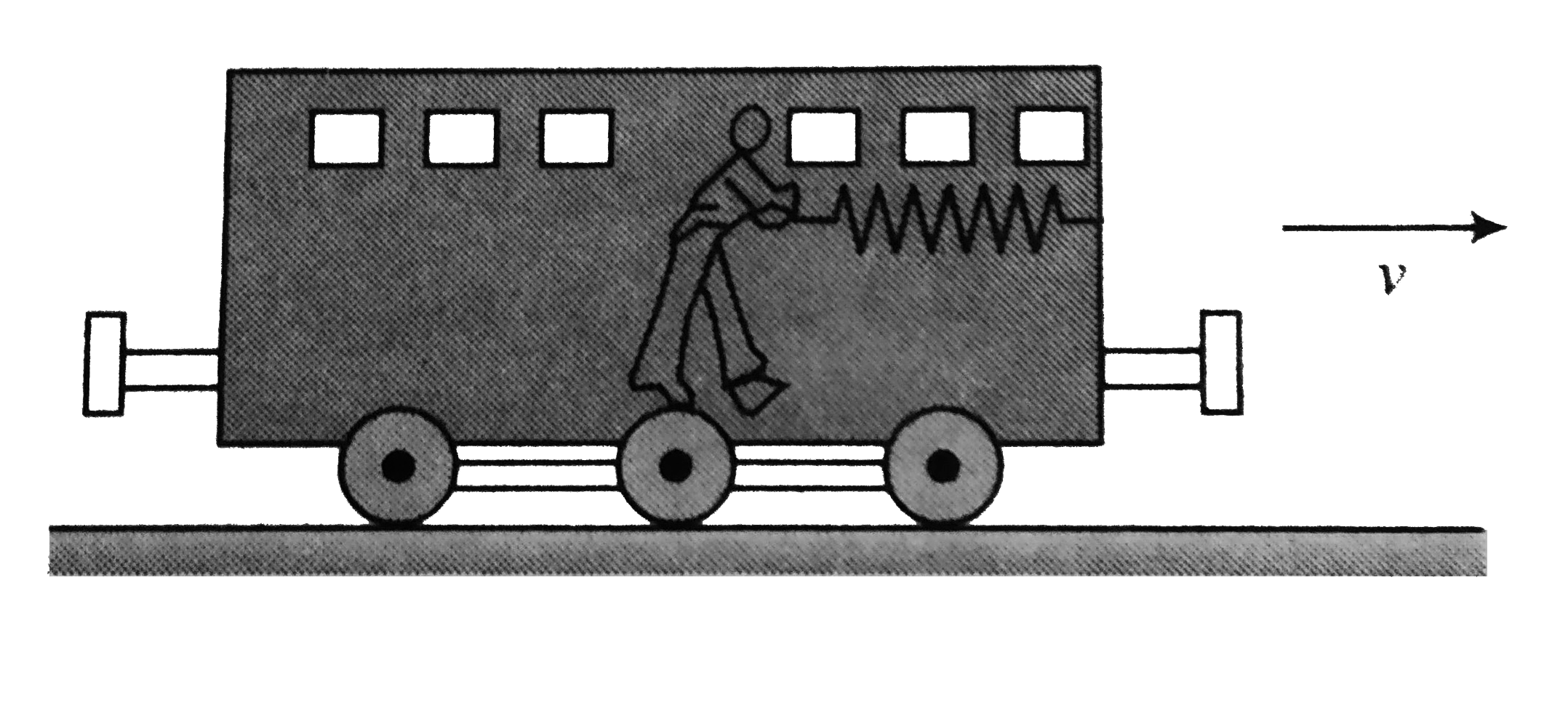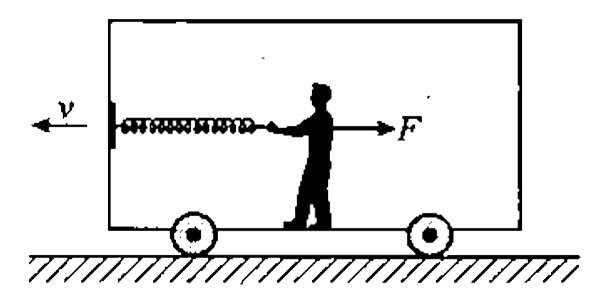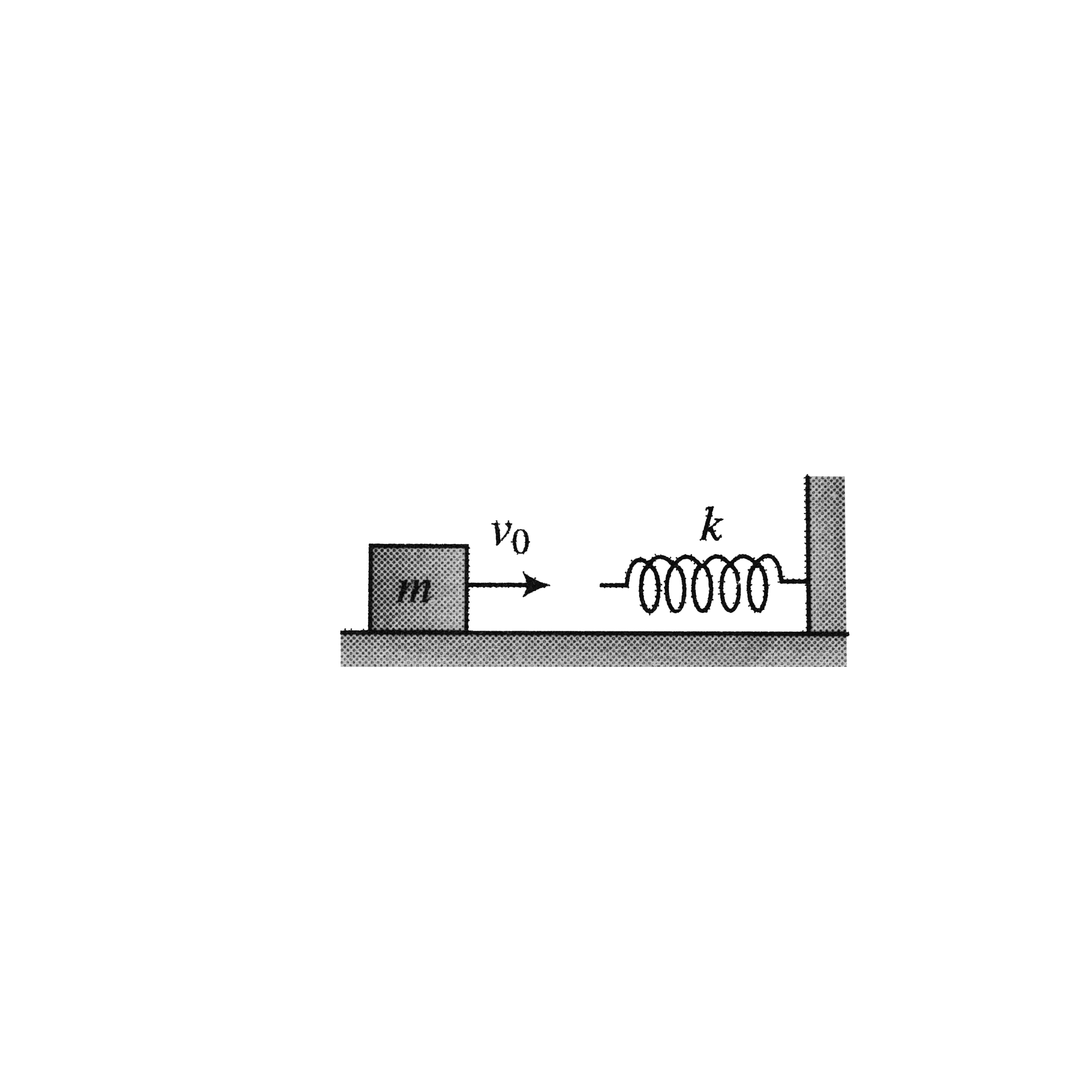A moving railway compartment has a spring of constant k fixed to its front wall. A boy stretches this spring by distance x and in the mean time the compartment moves by a distance s. The work done by boy w.r.t. earth is

(a) 12kx2
(b) 12(kx)(s+x)
(c) 12kxs
(d) 12kx(s+x+s)
The correct Answer is:A
Total work done in equal to the energy stored in the spring.
Topper's Solved these Questions
- BOOK - CENGAGE PHYSICSCHAPTER - WORK, POWER & ENERGYEXERCISE - Multiple Correct25videos
WORK, POWER & ENERGY
- BOOK - CENGAGE PHYSICSCHAPTER - WORK, POWER & ENERGYEXERCISE - Linked Comprehension55videos
WORK, POWER & ENERGY
- BOOK - CENGAGE PHYSICSCHAPTER - WORK, POWER & ENERGYEXERCISE - Subjective23videos
WORK, POWER & ENERGY
- BOOK - CENGAGE PHYSICSCHAPTER - VECTORSEXERCISE - Exercise Multiple Correct5videos
VECTORS
Similar Questions
A man stretches a spring attached to the front wall of railway carriage over a distance l in a uniformly moving train. During this time the trai covers a distance L. Does the work done by the man depend on the coordinate system related to the earth or the train? the man moves opposite to the direction of motion of the train as he stretches the spring.
 View Solution
View SolutionA spring is stretched by distance x and then compressed to same distance from its original length. The work done by the spring force is (k=spring constant)
View Solution
Knowledge Check
- Question 1 - Select One
A spring of force constant K is first stretched by distance a from its natural length and then further by distance b. The work done in stretching the part b is
A12Ka(a−b)B12Ka(a+b)C12Kb(a−b)D12Kb(2a+b) - Question 2 - Select One
Two children are playing a game in which they try to hit a small box using a spring loaded machine gun, which is fixed rigidly to a table at a height h above the top of the box. The spring has spring constant k and the box is at a horizontal distance l from O. The first child compresses the spring a distanc x0 and find that the marble falls short of box by a horizontal distance y. The second child compreses the spring by an extra amount Δx so that marble lands in the box. The value of Δx is
 Al√mghkBl√2mghkC2y√mghkDy√mg2hk
Al√mghkBl√2mghkC2y√mghkDy√mg2hk - Question 3 - Select One
Two equal masses are attached to the two ends of a spring of spring constant k. The masses are pulled out symmetrically to stretch the spring by a length x over its natural length. The work done by the spring on each mass is
A12kx2B−12kx2C14kx2D−14kx2
Two equal masses are attached to the two end of a spring of force constant k the masses are pulled out symmetrically to stretch the spring by a length 2x0 over its natural length. Find the work done by the spring on each mass.
View SolutionA block of mass m is moving with an initial velocity v0 towards a stationary spring of stiffness k attached to the wall as shown in figure

a. Find the maximum compression in the spring.
b. Is the work done by the spring negative or positive?View SolutionTwo equal masses are attached to the two ends of a spring of spring constant k. The masses are pulled a part symmetrically to stretch the spring by a length x over its natural length. The work done by the spring on each mass is.
View SolutionTwo equal masses are attached to the two ends of a spring of spring constant k. The masses are pulled a part symmetrically to stretch the spring by a length x over its natural length. The work done by the spring on each mass is.
View SolutionAn elastic spring of unstretched length L and force constant k is stretched by a small length x. It is further stretched by another small length y. The work done in the second stretching is
View Solution

